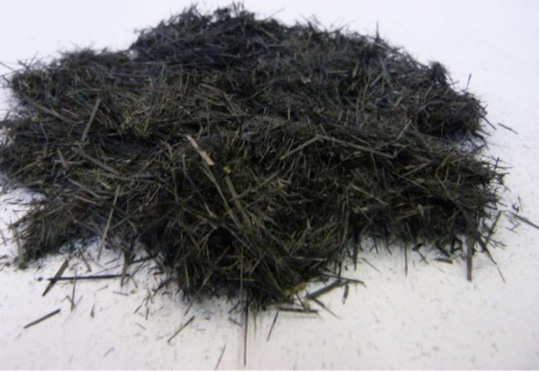As the demand for carbon fiber has grown, so has the waste stream of scrap and end-of-life composite materials. For a material to be considered sustainable, its environmental impact needs to be considered through its entire life cycle, including reuse or recycling. As a result, companies in Germany, Japan, and the United States are recycling carbon fiber using a process called pyrolysis. In the pyrolysis process, carbon-fiber composites are heated at high temperature (400 to 500 degrees Celsius) in the absence of oxygen to produce a combustible gas (syngas) that can be used as fuel, oil that can be used as a fuel or chemical feedstock, and carbon fibers. See also: Composite materials; Green engineering; Pyrolysis

Carbon fiber is one of the strongest and lightest known materials. High-strength carbon fibers are embedded in a polymeric matrix, such as an epoxy resin, to make a composite material. Because of their light weight and high strength, carbon-fiber composites are increasingly being used in aerospace, wind-turbine, automotive, industrial, and sporting-goods applications. In aircraft, carbon-fiber composites have replaced aluminum as a means for improving fuel economy (distance traveled per volume of fuel). In addition, carbon-fiber wind-turbine blades are lighter than glass-fiber blades, which allows for the production of longer blades of the same weight that have higher energy output. See also: Aircraft design; Composite laminates; Composite material systems and structures; Polyether resins; Polymer composites; Wind power
Recycling carbon-fiber composites offers two major benefits: it reduces the amount of material entering landfills and provides manufacturers with a cost savings of 30 percent, compared to new carbon fiber. Although carbon fibers that are recycled from aerospace applications cannot be used again for aircraft, the fibers retain 90 to 95 percent of their original properties and are considered to be of higher quality than industrial-grade fibers, which are suitable for the automotive industries.





